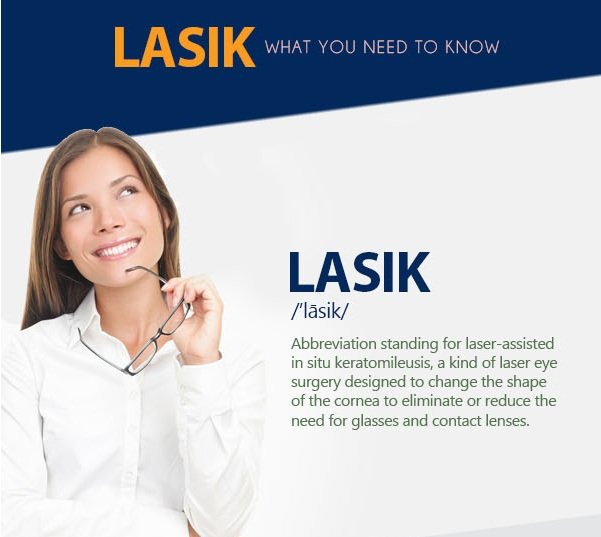Exactly How Does SMILE Eye Surgical Procedure Compare To LASIK And PRK?
Exactly How Does SMILE Eye Surgical Procedure Compare To LASIK And PRK?
Blog Article
Authored By-Adler Michelsen
If you've been thinking about SMILE eye surgical treatment, you might wonder exactly how it stacks up against LASIK and PRK. Each procedure has its own collection of advantages and factors to consider. From quicker recuperation times to potential threats, there are essential distinctions you should know before making a decision. Understanding these distinctions will help you make an enlightened choice that aligns with your particular demands and expectations. Curious to understand even more regarding just how these treatments contrast thoroughly? Continue discovering to get a comprehensive understanding of SMILE, LASIK, and PRK.
SMILE Eye Surgical Procedure Summary
If you're taking into consideration SMILE eye surgery, you'll discover it to be a minimally invasive procedure with a quick healing time. During SMILE (Little Cut Lenticule Removal), a laser is used to create a small, exact cut in the cornea to remove a tiny item of tissue, improving it to fix your vision. This differs from LASIK, where a flap is developed, and PRK, where the external layer of the cornea is completely eliminated.
Among the key advantages of SMILE is its minimally invasive nature, resulting in a faster healing process and less discomfort post-surgery. The healing time for SMILE is reasonably quick, with many clients experiencing boosted vision within a day or two. This makes it a popular choice for those seeking a convenient and reliable vision modification treatment. In addition, SMILE has been revealed to have a lower danger of completely dry eye syndrome compared to LASIK, making it a positive option for individuals concerned about this potential side effect.
Distinctions In Between SMILE, LASIK, and PRK
When contrasting SMILE, LASIK, and PRK eye surgical procedures, it is essential to recognize the unique strategies made use of in each procedure for vision improvement.
SMILE (Little Cut Lenticule Removal) is a minimally intrusive treatment that includes creating a small incision to remove a lenticule from the cornea, reshaping it to deal with vision.
LASIK (Laser-Assisted In Situ Keratomileusis) involves creating a thin flap on the cornea, utilizing a laser to improve the underlying tissue, and afterwards repositioning the flap.
PRK (Photorefractive Keratectomy) gets rid of the external layer of the cornea before improving the tissue with a laser.
The major distinction depends on the way the cornea is accessed and dealt with. visit my webpage is flapless, making it an excellent option for people with thin corneas or those involved in contact sporting activities. LASIK supplies fast aesthetic healing due to the flap production, but it may posture a higher threat of flap-related issues. PRK, although having a longer recuperation period, prevents flap-related concerns completely.
Understanding just click the next webpage is essential in choosing the most ideal treatment for your vision modification demands.
Pros and Cons Comparison
To assess the benefits and disadvantages of SMILE, LASIK, and PRK eye surgical procedures, it's essential to take into consideration the particular advantages and potential constraints of each procedure. SMILE surgery provides the benefit of a minimally intrusive procedure, with a smaller cut and potentially quicker recuperation time compared to LASIK and PRK. It also reduces the threat of completely dry eye post-surgery, a typical negative effects of LASIK. Nevertheless, SMILE might have constraints in dealing with higher degrees of nearsightedness or astigmatism compared to LASIK.
LASIK surgical procedure offers quick visual recovery and marginal discomfort throughout the treatment. It's highly effective in dealing with a variety of refractive mistakes, including myopia, hyperopia, and astigmatism. Yet, LASIK lugs a threat of flap issues, which can affect the corneal framework.
PRK eye surgery, while not as popular as LASIK, stays clear of developing a corneal flap, lowering the danger of flap-related problems. It's suitable for patients with slim corneas or uneven corneal surfaces. Nevertheless, PRK has a longer healing time and might include much more discomfort throughout the recovery procedure.
Verdict
So, when it involves picking in between SMILE, LASIK, and PRK, consider it like choosing the excellent pair of shoes. SMILE resembles a streamlined, comfy set of sneakers - fast and easy.
LASIK is much more like trendy high heels - flashy and quickly, but with some possible threats.
PRK is like sturdy treking boots - dependable and long lasting, yet calling for a little bit even more effort and time.
Inevitably, the best option depends on your individual needs and choices.
